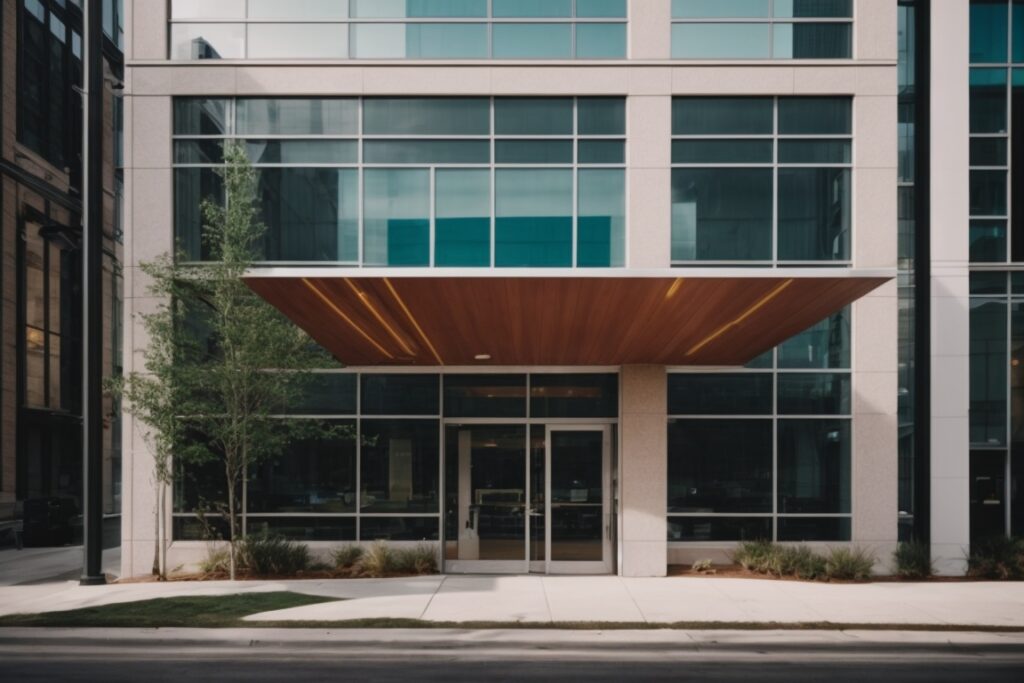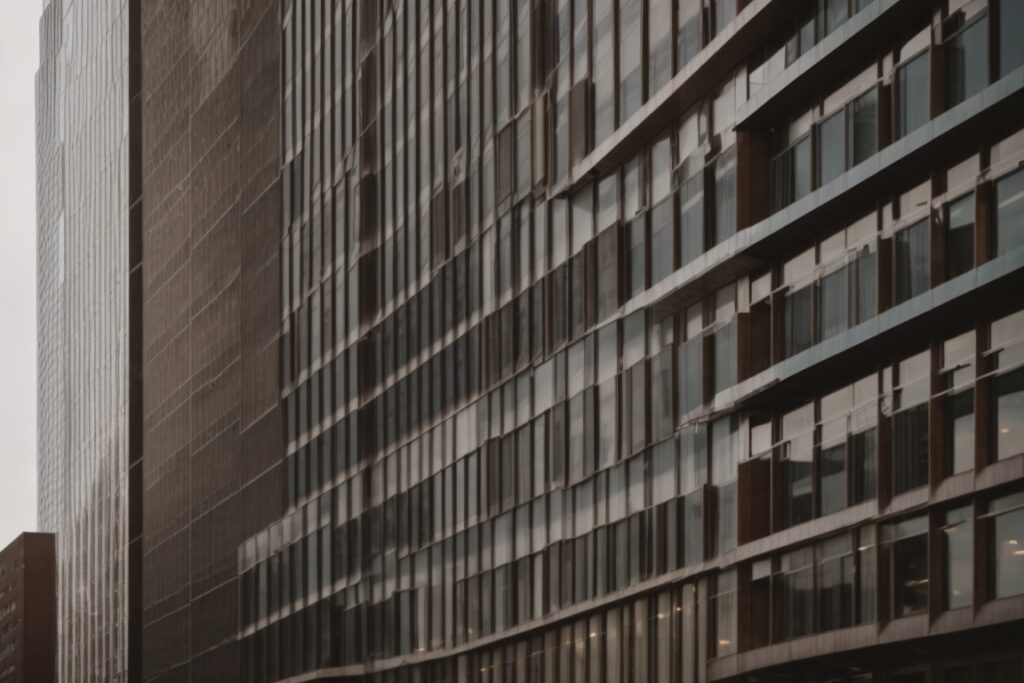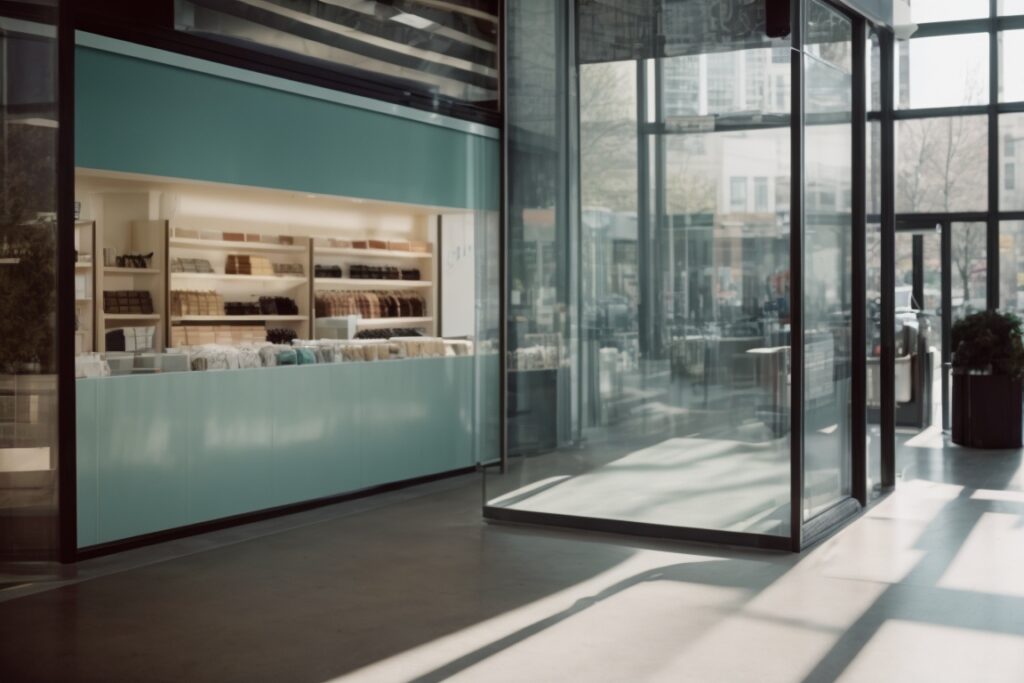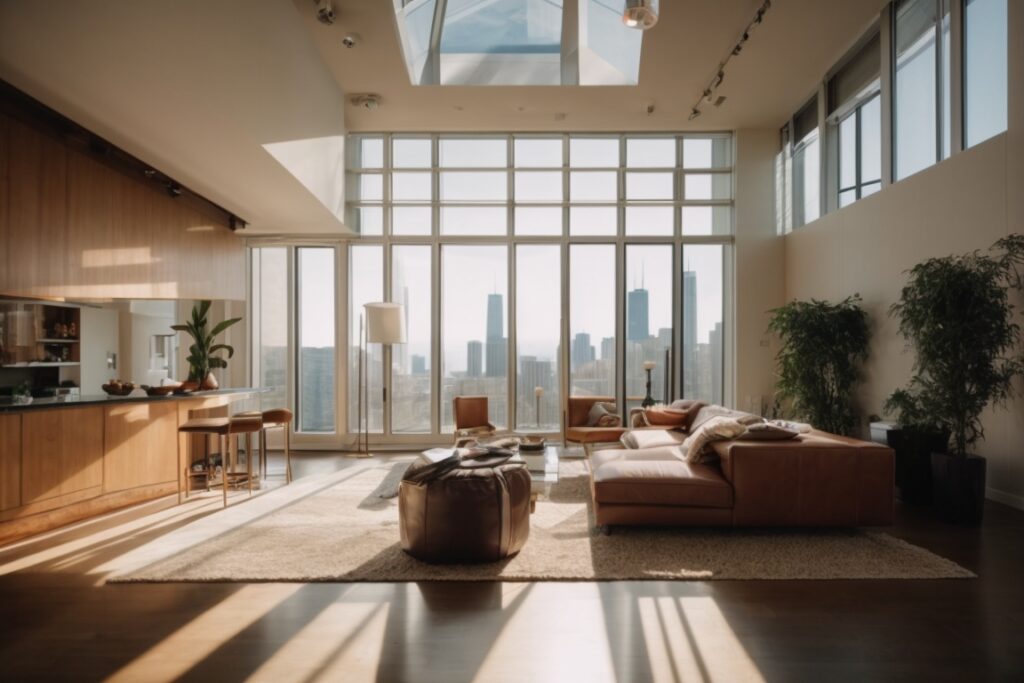
The Surging Need for Window Tint Film in Chicago Homes
In Chicago, the push towards energy efficiency within homes is more crucial than ever. As residents face extreme weather conditions ranging from blistering summers to frigid winters, the quest for cost-effective solutions to manage home temperatures and energy usage intensifies. Window tint film in Chicago has emerged as a significant player in this arena, offering a promising pathway to reduce utility bills and enhance environmental sustainability. Yet, many homeowners remain unaware of the substantial benefits that window tinting can provide.
The introduction of window tint film into the residential sector is not simply a trend but a necessary evolution in how we view and manage our living spaces. With energy costs on the rise and environmental concerns taking center stage globally, the relevance of this technology can no longer be overlooked. The impact of properly installed window tint film transcends mere aesthetic enhancement, venturing into the realms of economic savings and environmental protection.
Exploring the energy-saving potential of window tinting goes beyond basic utility cost cuts. It addresses vital environmental issues, such as reducing carbon footprints and decreasing the need for excessive air conditioning and heating. As Chicago grapples with its energy challenges, the role of advanced, energy-efficient technologies like window tint film becomes increasingly critical. Igniting a conversation on this subject could lead to more informed decisions that significantly benefit both individual homeowners and the broader community.
Window Tint Film: A Necessity for Energy Efficiency in Chicago
In Chicago, where the weather can swing from extreme cold in winter to sweltering heat in summer, homeowners face a significant challenge in managing their home’s energy consumption and maintaining comfort. The primary issue here is the high cost of energy in residential areas and the increasing environmental impact associated with excessive energy use. Traditional methods of insulation and energy-saving techniques can often fall short in providing both economic efficiency and environmental sustainability.
Window tint film emerges as a vital solution for these issues. It not only helps in reducing the dependency on heating and cooling systems but also minimizes the carbon footprint of homes. However, despite its clear benefits, many are not aware of how effective window tint films can be, especially in a city like Chicago where energy consumption patterns vary dramatically with the seasons. This leads to prolonged high energy bills and increased environmental degradation, emphasizing the need for a more sustainable solution.
Stunning Energy Savings with Window Tint Film in Chicago
In the bustling cityscape of Chicago, homeowners employing window tint film are witnessing a remarkable decrease in their energy bills. A startling statistic reveals that window tint film can reduce home energy costs by up to 30% annually. This is not just a local trend; nationwide, buildings account for 41% of energy consumption, with heating and cooling as prime culprits. By moderating indoor temperatures, window tint films slash the demand on HVAC systems significantly—translating to lower utility bills and a reduced environmental impact.
The Problem with Inadequate Window Solutions in Chicago Homes
Living in Chicago comes with its unique set of climatic challenges, notably the extreme variations in temperature from sweltering summers to freezing winters. Many homeowners face a significant problem related to energy consumption and cost due to inadequate window installations, including thin or untreated window glass. While these might seem like minor issues at first, their impact on everyday life and the environment is substantial and far-reaching.
Standard windows without any form of tint or energy-efficient treatment can lead to excessive heat gain during summer and massive heat loss during winter. This not only forces HVAC systems to work harder, thereby increasing energy consumption and utility bills, but it also leads to a consistent discomfort inside homes. Furthermore, the reliance on heating and cooling systems increases carbon emissions, contributing negatively to environmental issues like global warming.
The financial implications are equally concerning as energy costs in urban areas like Chicago can be quite high. Homeowners may find themselves facing daunting utility bills that can tighten budgets and limit financial flexibility. The discomfort caused by temperature fluctuations can also affect the health and well-being of residents, possibly leading to increased medical expenses and decreased overall quality of life. This perpetual cycle of high energy consumption, high costs, and environmental degradation underscores a deep-rooted problem that Chicago residents must address.
Understanding the Problem: The Inadequacy of Standard Windows in Chicago’s Climate
In Chicago, the seasonal extremes of hot summers and freezing winters present a significant challenge for homeowners, particularly when it comes to energy efficiency. The primary problem lies in the significant heat gain during summer and heat loss during winter through standard window panes. This not only leads to uncomfortable indoor environments but also results in soaring energy bills as heating and cooling systems work overtime to compensate for the thermal inefficiency.
Moreover, the environmental impact cannot be overlooked. Excessive use of energy contributes to higher carbon footprints due to increased consumption of resources needed to heat and cool homes. To address this, an understanding that regular windows alone are not sufficient for the climatic demands of Chicago is essential. Homeowners need to realize that the integration of energy-efficient solutions like window tint film is not just a luxury but a necessity in combating the inefficiencies posed by typical windows.
Real-World Benefits of Window Tint Film in Chicago Homes
In Chicago, the Johnson family saw significant savings after installing window tint film in their home. Despite the city’s harsh winters and humid summers, the tint effectively minimized heat loss and gain, leading to a 30% reduction in their energy bills within the first year. This example highlights how practical window tinting can be in urban environments for both energy savings and environmental conservation.
Consequences of Ignoring Window Tint Film in Chicago Homes
Ignoring the advantages of window tint film in Chicago can have significant repercussions on both homeowners’ wallets and environmental efforts. Avoiding this simple upgrade might seem inconsequential at first, but it can lead to escalated energy consumption and increased utility bills.
Without window tint film, excessive sunlight penetrates into homes, significantly raising indoor temperatures during summer months. This leads to continuous running of air conditioning systems, which not only spikes energy costs but also puts undue stress on these systems, potentially shortening their lifespan. Come winter, the lack of insulation provided by window tints results in higher heating costs, as more heat escapes.
Moreover, the increased energy usage contributes to larger carbon footprints, negating efforts to reduce environmental impacts in urban settings like Chicago. Consequently, ignoring the installation of window tint film not only affects homeowners financially but also hinders environmental conservation initiatives.
Economic Impact of Window Tint Film in Chicago Homes
Installing window tint film in Chicago homes significantly influences the economic comfort of homeowners. Utilizing this technology can drastically reduce energy consumption, particularly during the harsh winters and humid summers typical in Chicago. This reduction in energy usage translates into lower utility bills, providing substantial savings over time. Additionally, the cost-efficiency of window tints increases the overall value of homes, making this upgrade not only a practical choice for economic savings but also a wise investment in property value.
Window Tint Film: A Cost-Effective Solution for Chicago Homeowners
In Chicago’s ever-changing climate, where both harsh winters and sweltering summers are a reality, window tint film serves as an efficient and economical answer to several prevalent issues homeowners face. This solution specifically addresses the critical problems of high energy costs and environmental impact, making it a must-consider option for Chicago residents.
Window tint film in Chicago homes provides year-round benefits. During summer, the film reflects a significant portion of the sun’s rays, reducing the amount of heat entering the home. This feature reduces the reliance on air conditioning, consequently lowering utility bills. In colder winter months, window tint film helps retain indoor heat, decreasing the amount of energy required to heat the home and thus, further contributing to energy savings.
Moreover, the efficiency of window tint film extends beyond just temperature control. By blocking harmful UV rays, it protects interior furnishings from fading, reducing the need for frequent replacements or repairs. This longevity and maintenance aspect directly affects the environmental footprint by decreasing the demand for new materials and reducing waste.
With such a promising array of benefits, window tint film is not only a strategic investment for cost savings but also an environmentally responsible choice. This positioning as a dual-purpose solution—one that economizes while conserving makes window tint film in Chicago an outstanding option for savvy homeowners looking to reduce both their bills and ecological impact.
Energy Savings with Window Tint Film in Chicago Homes
Window tint film is becoming an increasingly popular option for homeowners in Chicago looking to cut energy costs and reduce their environmental footprint. Specifically designed to mitigate the harsh effects of the sun, window tint film assists in maintaining a stable and comfortable indoor temperature throughout the year.
By installing window tint film, homeowners in Chicago can block a significant amount of solar heat gain, which is particularly beneficial during the sweltering summer months. This reduction in heat gain means that air conditioning systems do not have to work as hard, thereby lowering energy consumption and utility bills. Moreover, during colder months, the same window tint film helps retain indoor heat, further stabilizing temperature and reducing heating costs.
With its dual-action benefits in both summer and winter, window tint film is an effective and economical solution for improving the energy efficiency of homes. Not only does it help homeowners save on energy bills, but it also contributes to a lower carbon footprint, aligning with environmental sustainability goals, a critical concern in today’s eco-aware society.
Benefits and Features: Window Tint Film in Chicago Homes
Window tint film provides numerous advantages for Chicago homeowners, especially when it comes to energy savings and comfort. This innovative product significantly reduces heat gain during the city’s warm summers, leading to lower air conditioning costs. Additionally, it helps retain heat during chilly winters, thus decreasing heating expenses. The film also blocks out harmful ultraviolet rays, protecting your furniture and flooring from fading. Beyond practical benefits, window tint film enhances privacy and adds a sleek, modern aesthetic to any home.
Testimonials: Chicago Residents Praise Window Tint Film
In Chicago, where the weather varies drastically between the hot summers and frigid winters, residents are finding great relief and cost savings with window tint film. Johnathon M., a North Side homeowner, shares his experience: “After installing window tint film in our house, the difference was clear. Not only was our living room more comfortable during the season extremes, but our energy bills went down by about 30% each month. It’s a change that pays for itself.”
Similarly, Linda G. from Lincoln Park notes, “The glare on my television was always a problem before, but since we got our windows tinted, we can enjoy our media room much more. Plus, the reduced heat during summers has been a godsend.” Reflecting on added benefits, she also appreciates the decreased UV exposure, which helps in protecting her furnishings from sun damage.
Case Study: Significant Savings with Window Tint Film in Chicago
In Chicago, the Robertson family installed window tint film in their home and observed a noticeable decrease in their energy bills, especially during the harsh winters and humid summers. This installation led to an annual savings of approximately 25% on heating and cooling costs. Their success story highlights how effective window tint film can be in improving energy efficiency and reducing environmental impact in urban settings. Inspired by their results? Contact us today to see how you can start saving too!







About The Author: Mike Kinsey
Mike Kinsey has more than a decade of experience installing window film in the Chicago area. His years of experience have allowed him to develop a deep familiarity with all of the different types and styles of window film on the market including the various security, privacy, decorative, and energy efficient options. Together, he and his team have completed hundreds of commercial and residential installs, totaling an accumulation of over 250,000 square feet. In addition to being an expert on top brands such as LLumar, C-Bond, HDClear, Solar Gard, Solyx, and Huper Optik, Mike is also certified by 3M, EnerLogic, and AIA for continuing education.
More posts by Mike Kinsey